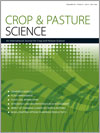CP13041Effects of Rht dwarfing alleles on wheat seed vigour after controlled deterioration
High yields of modern wheat cultivars are associated with shorter plants carrying dwarfing genes that are assumed to reduce seed vigour. Seeds of six modern cultivars carrying four different dwarfing genes and two gene combinations were stressed by high moisture content (18%) and temperature (42°C). Seed vigour loss was cultivar dependent and, mostly, gene combinations caused reduced root and shoot lengths and increased time to 50% germination which, finally, could affect profit of seed industry.




